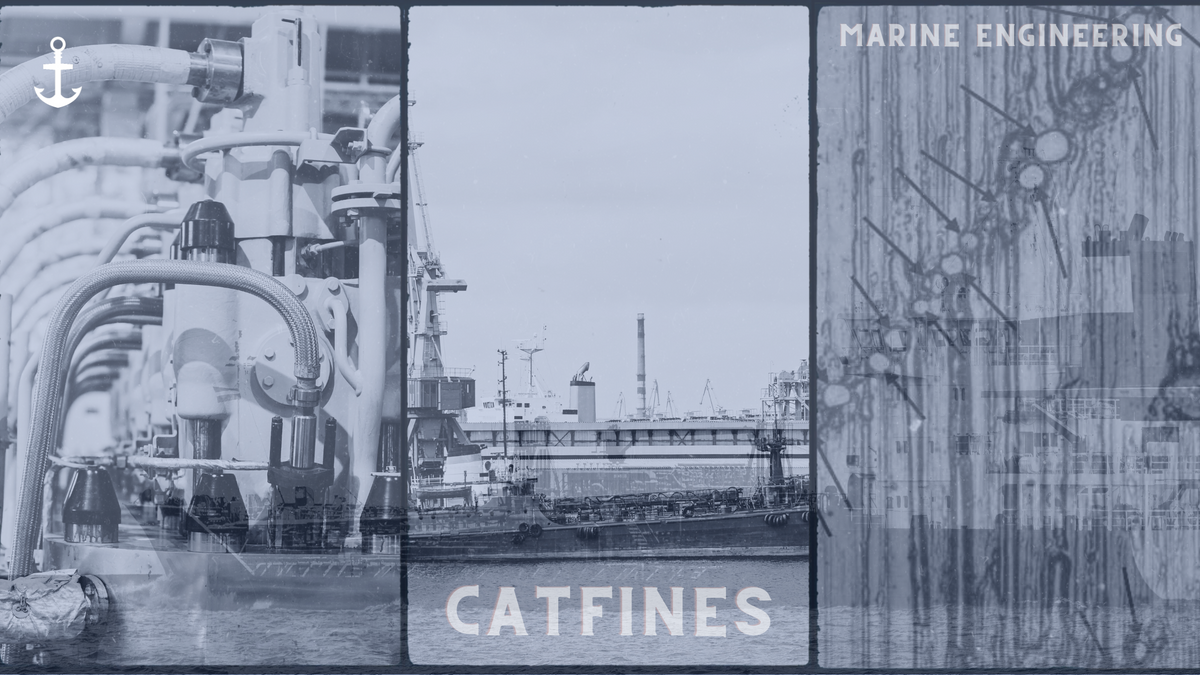The Maritime Grind: Discussing Cat Fines and Engine Wear

As maritime professionals, have cat fines ever bothered you? If yes, you must read this blog line by line so that next time you are prepared to deal with both the cat and the fines associated with it.(Meow, Ha ha ha!)
Why don't cat fines ever get lost?
Because they always know how to find their way to the bottom of the tank!
(just for fun)
Jokes apart, In the maritime industry, we often deal with colossal challenges(for better mostly). Ships transport the world's goods across vast distances, facing enormous waves and even storms visible from space.
Yet, one of the most significant threats to our operations comes from something incredibly tiny – cat fines. These minuscule particles pose a serious risk to the safe operation of our global fleet, and this risk may increase in the future.
A new set of regulations, effective from the start of 2020, brought about substantial changes in the types of marine fuels available worldwide. Ship operators had and are in process enhance their understanding of these changes and adopting more sophisticated fuel handling strategies to ensure reliable and safe engine performance.
For experts in the topic, you can start with a small Quiz; for others, you can take the test after reading the blog. In any case, reading will only help you make informed decisions in real-life situations on board. Click the Quiz icon on the right side tab to give the quiz, whenever you are ready.
Fuels in Flux
Starting on January 1, 2020, the global shipping industry will enter a new era of low-sulfur fuels, marking one of the most significant regulatory shifts since the MARPOL 73/78 conventions.
However, the transition to these low-sulfur fuels introduces a host of operational changes and fuel choices for ship operators.
While ships running on liquid natural gas (LNG) will easily comply with these regulations, most of the global fleet will need to choose from various low-sulfur distillates, blends, and alternative fuels. Each new fuel type will bring its unique set of operational and economic challenges.
Spotlight on Cat Fines
Among the many variables introduced by the low-sulfur era, cat fines are emerging as one of the most potentially damaging factors for ship engines and operators' budgets.
While cat fines have been a known concern in the shipping industry, their prominence as a risk factor is growing due to the changes in fuel composition.
What Are Cat Fines?
Cat fines, short for catalytic fines, are tiny, hard particles found in bunker fuel. They can range in size from sub-micron to around 100 microns, making them small enough to penetrate ship engines. These fines result from the catalytic cracking and sulfur removal processes during fuel production.
There is compelling evidence that hull underwriters are encountering a significant uptick in engine damage occurrences due to excessive component wear. A substantial number of these claims can be attributed to poor fuel quality, particularly the presence of high levels of cat fines in the fuel.
With a growing demand driven by environmental legislation mandating the use of cleaner fuel, low-sulfur bunkers containing a higher cat fine content are now mandatory for vessels operating in emission-controlled areas.
This situation underscores the necessity for meticulous fuel management.
Few Key Points:
- There is concrete evidence that the quality of heavy fuel oil bunkers has deteriorated in recent years, leading to an increased frequency of engine damage.
- Individual claims arising from cat fines are likely to surpass $1 million.
- High-density cat fines can significantly accelerate the wear rate of critical machinery components.
- Data illustrates a rise in cat fine levels corresponding to the demand for low-sulfur fuel, along with a notable increase in cat fine-related damage cases.
- A disparity exists between ISO standards for cat fine content and the recommended content set by engine manufacturers. This necessitates effective filtration, purification, and fuel management.
- Contributory factors may include:
- Inadequate capacity and poor efficiency of purifiers.
- Lack of knowledge regarding the current fuel quality on board.
- Absence of effective maintenance practices
A substantial portion of these claims can be traced back to poor fuel quality, specifically elevated levels of catalytic (cat) fines within the fuel.
Cat fines, tiny yet incredibly hard particles composed of aluminum-silica material, can be found in residual fuels. These fines may infiltrate the engine's combustion space during fuel injection, embedding themselves on the surfaces of cast iron cylinder liners, piston grooves, and rings. Once inside the engine, these exceptionally hard particles act as abrasives, rapidly eroding the sliding components.
The rate of wear depends on the quantity and size of the cat fine particles, sometimes resulting in excessive wear within just a few weeks. While this issue predominantly affects large two-stroke engines, instances involving four-stroke engines have also been reported.
The associated costs of these claims can easily surpass one million USD, especially if ship owners take inappropriate actions after diagnosing the problem.
The root cause of this escalating trend largely stems from global environmental regulations aimed at reducing sulfur levels in ship fuels. As these limits continue to decrease in the coming years, the incidence of engine damage is expected to rise correspondingly.
Fortunately, there exist solutions and preventative measures to help minimize these risks. With the cooperation of legislative and technical bodies, ship owners, charterers, and classification societies, the frequency of such occurrences can be reduced